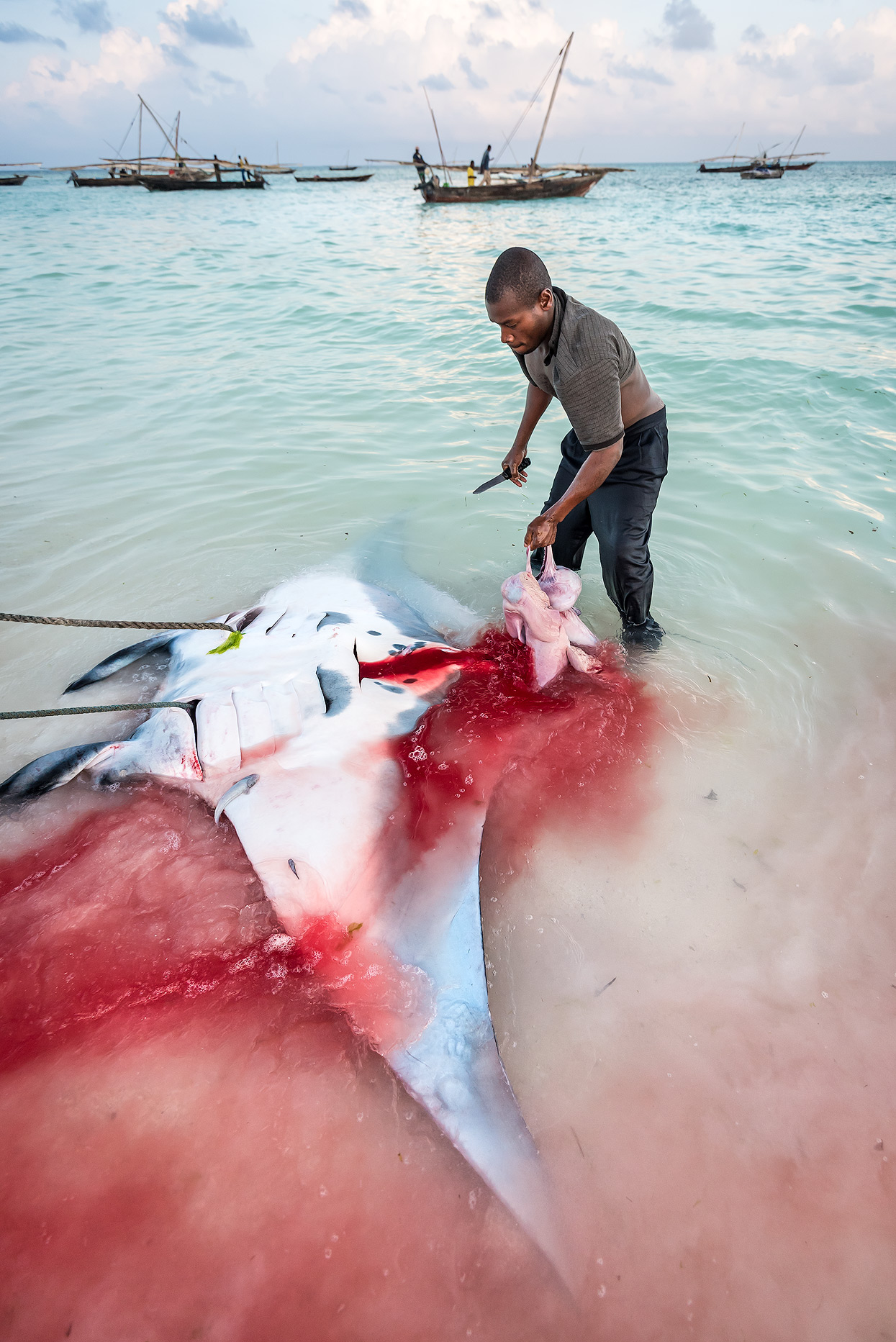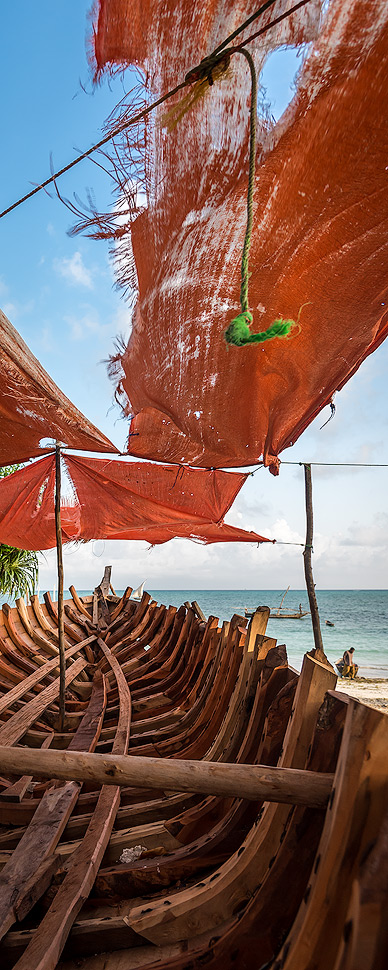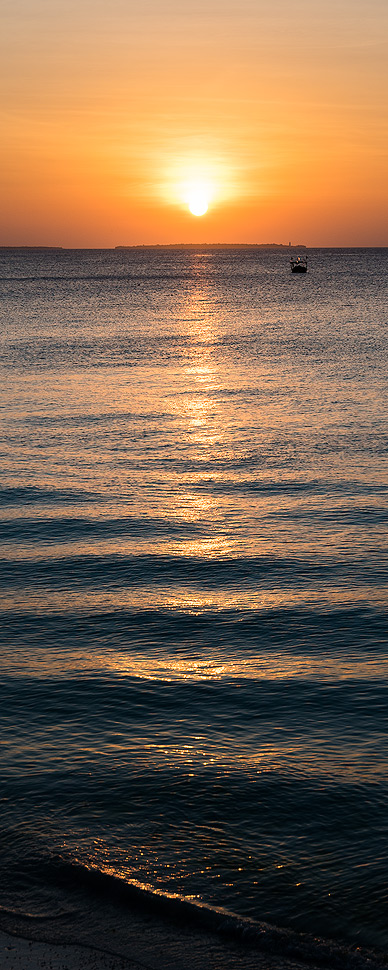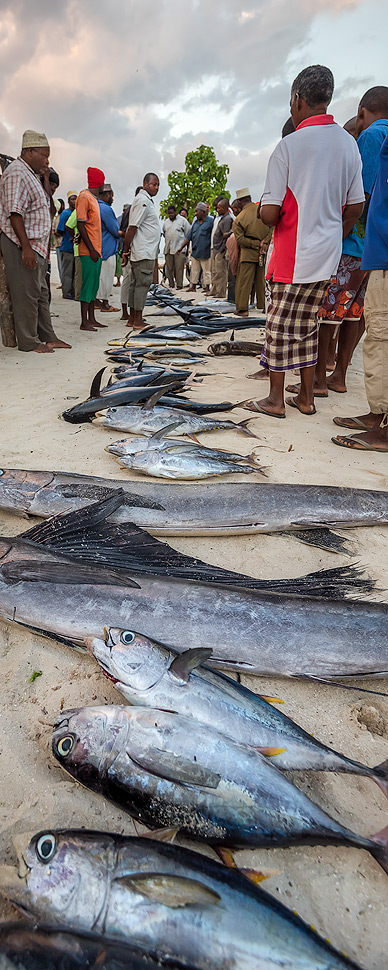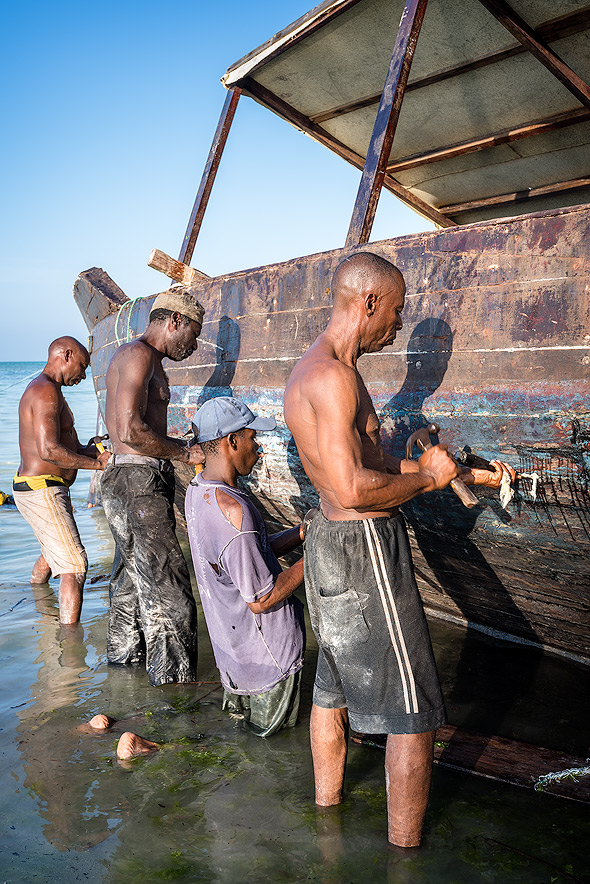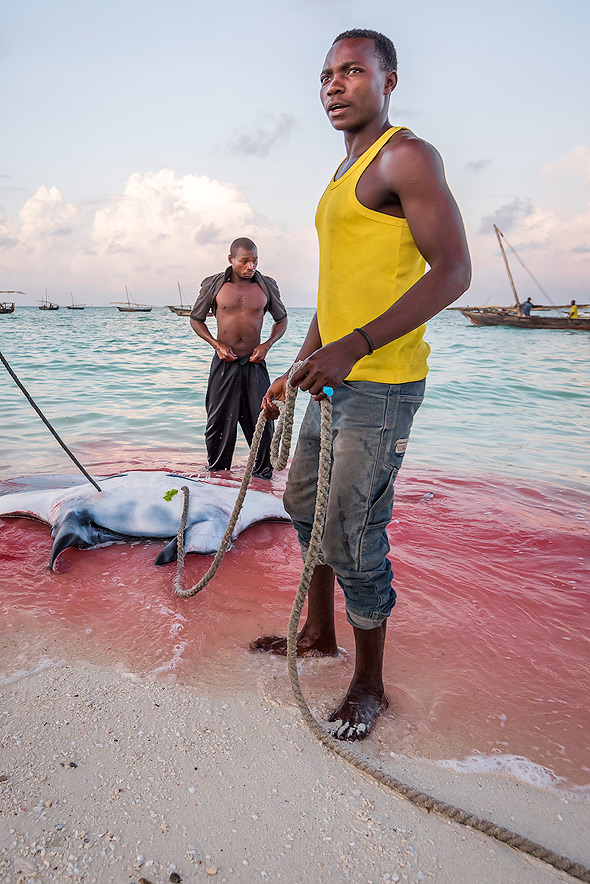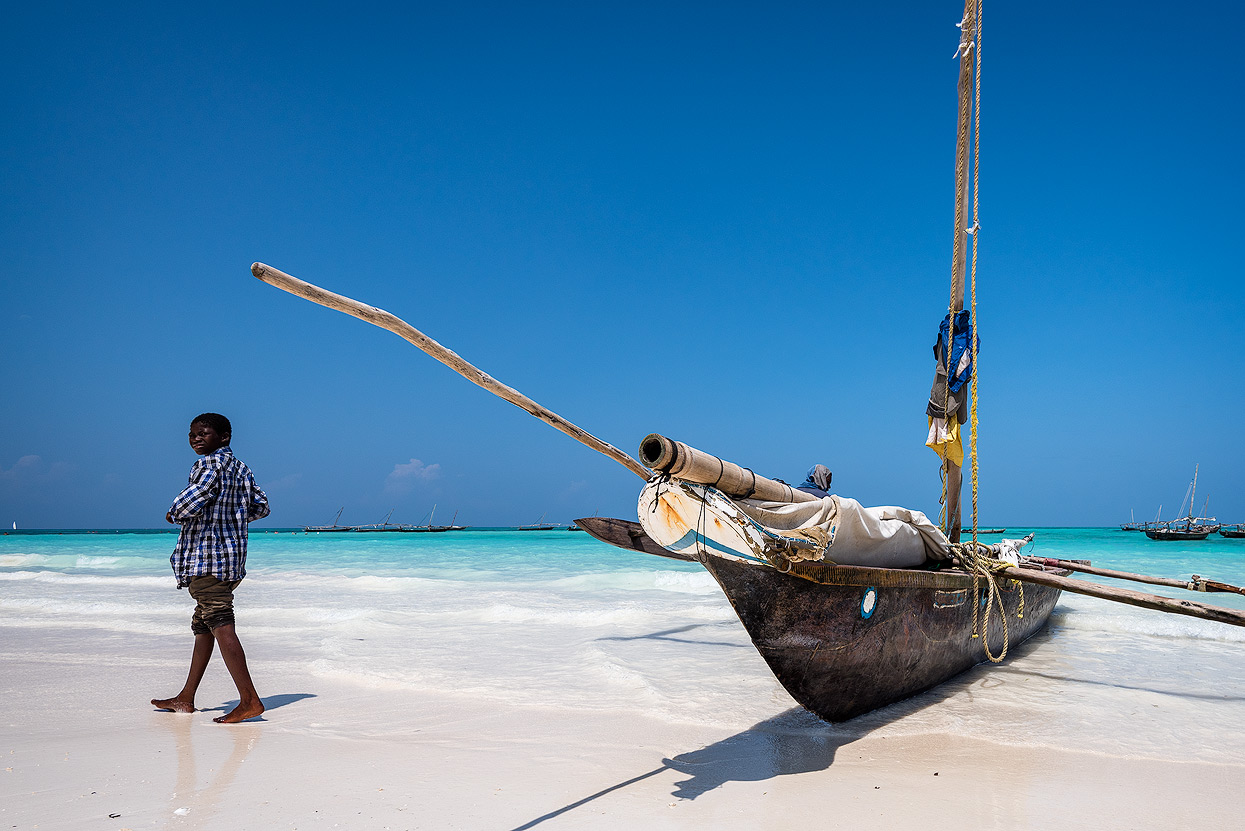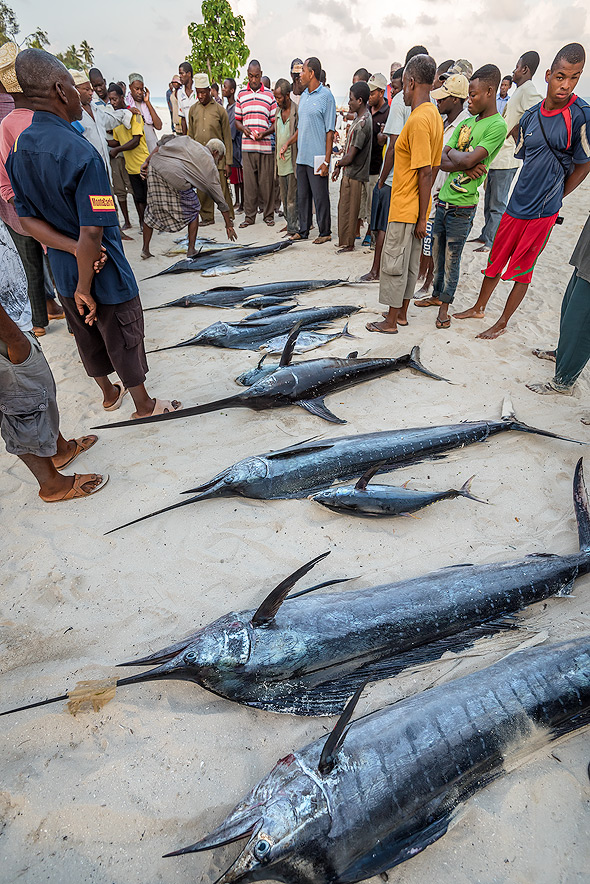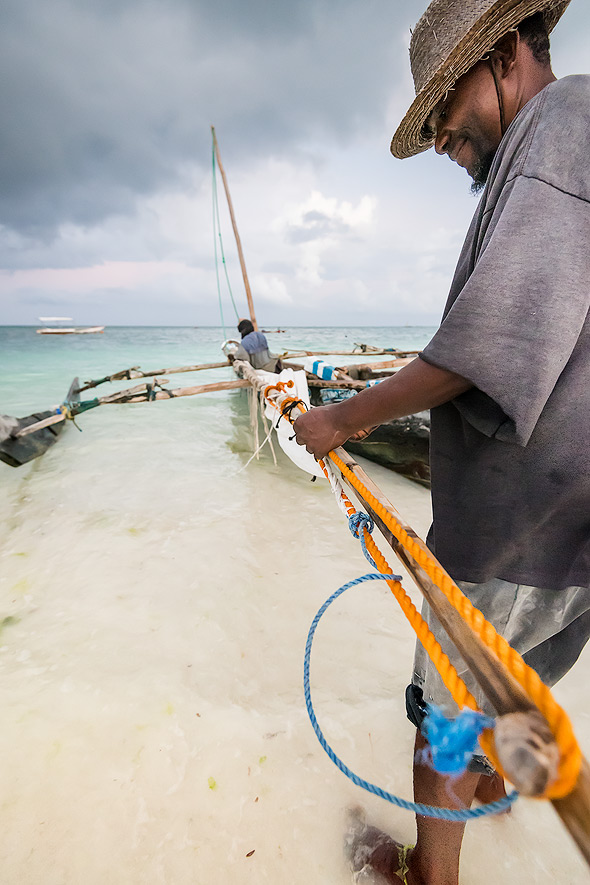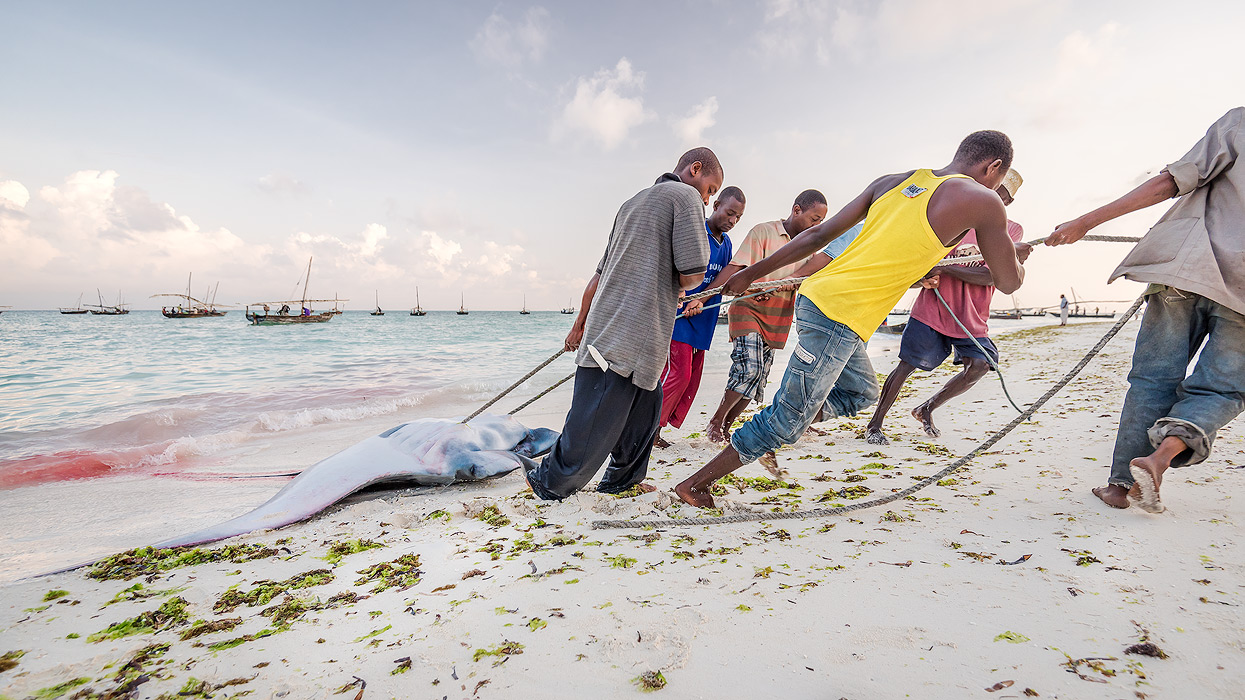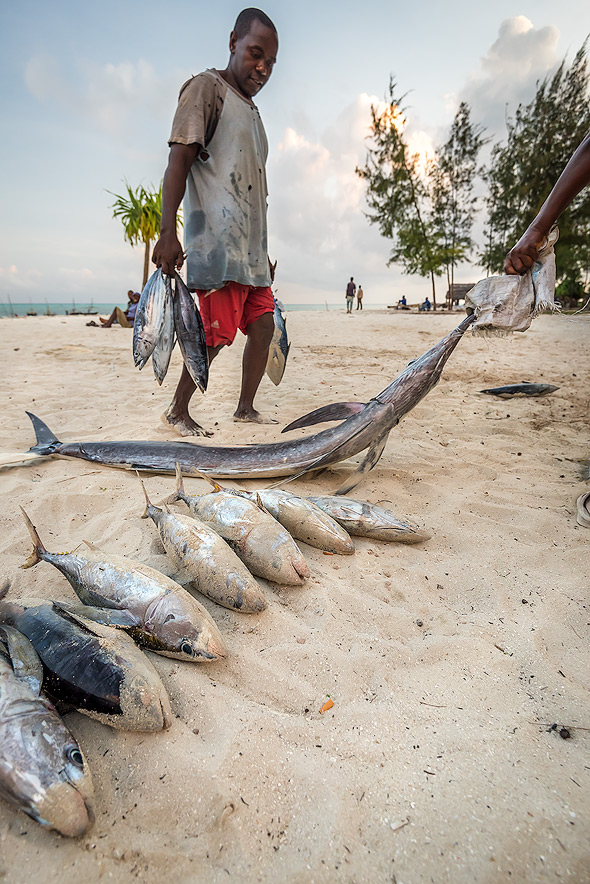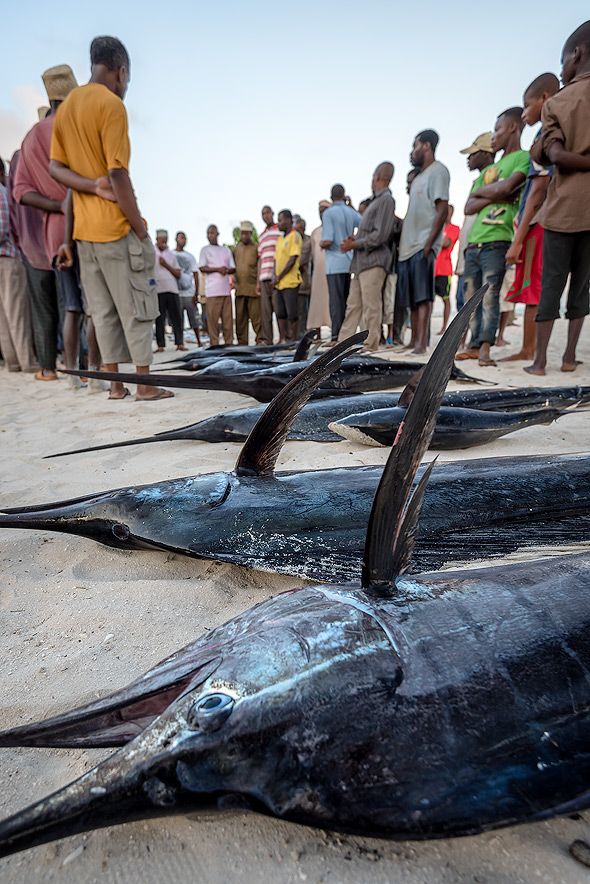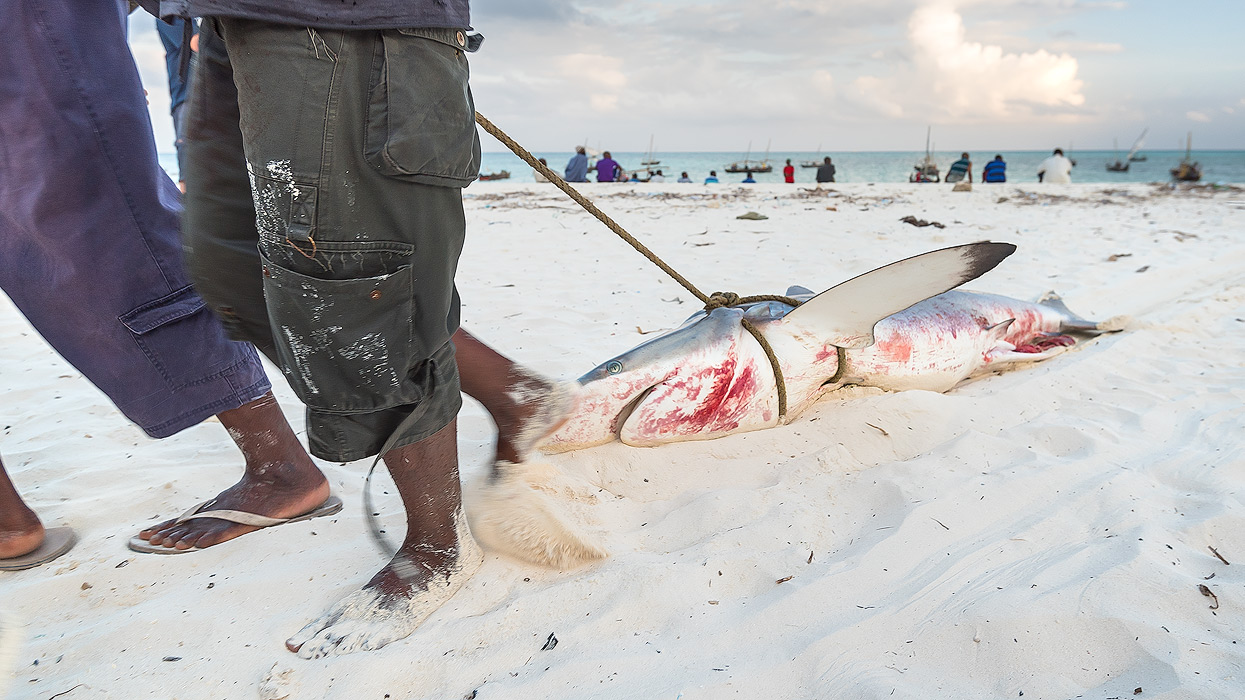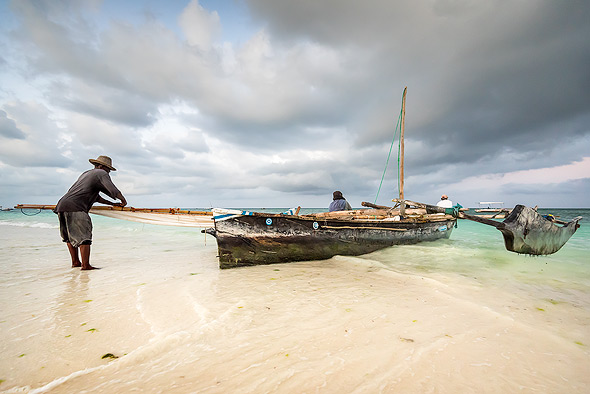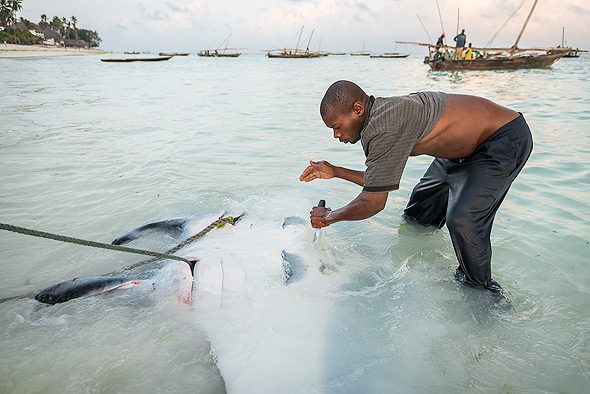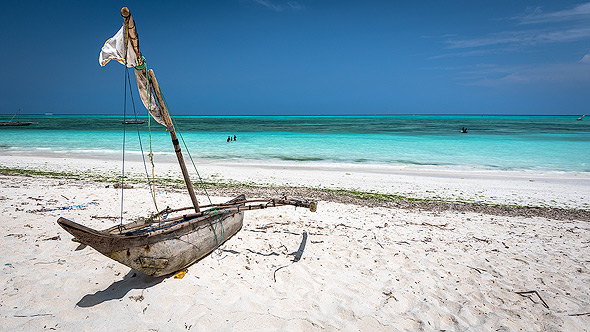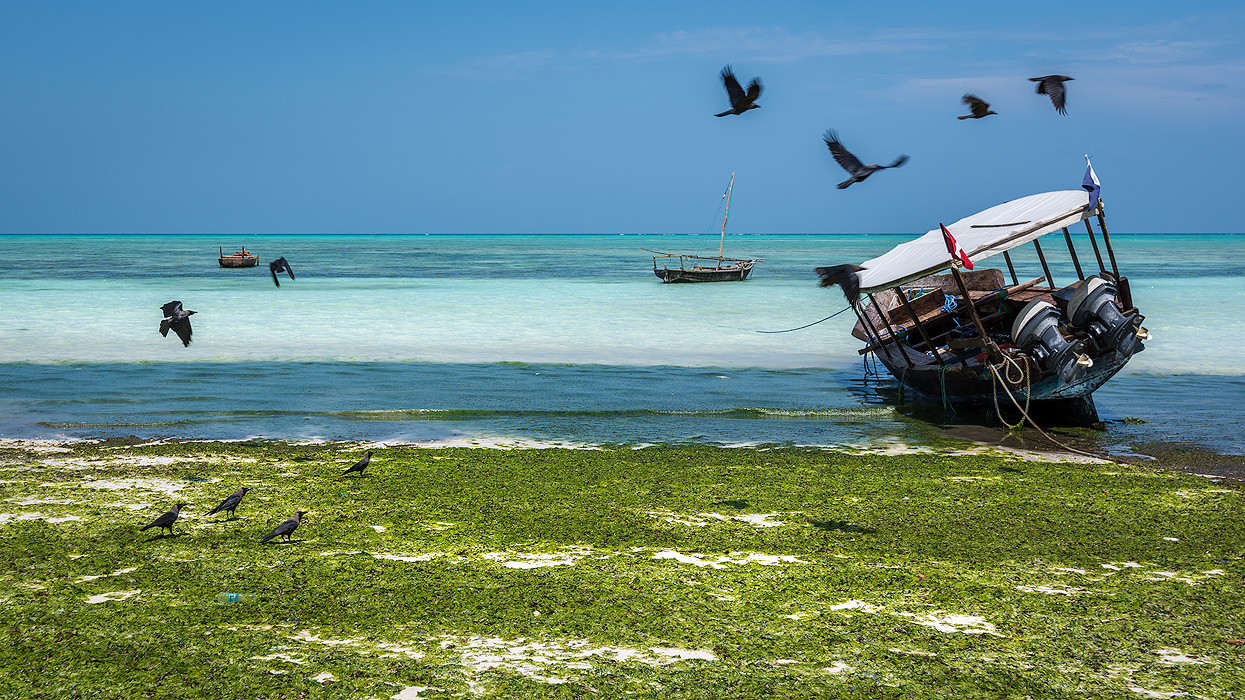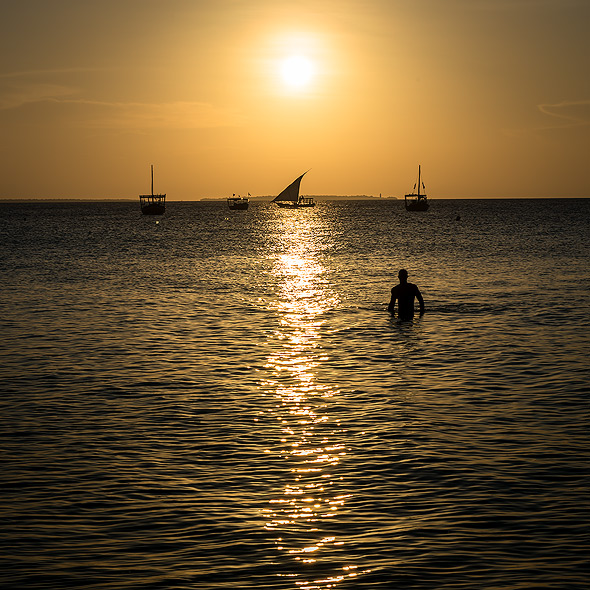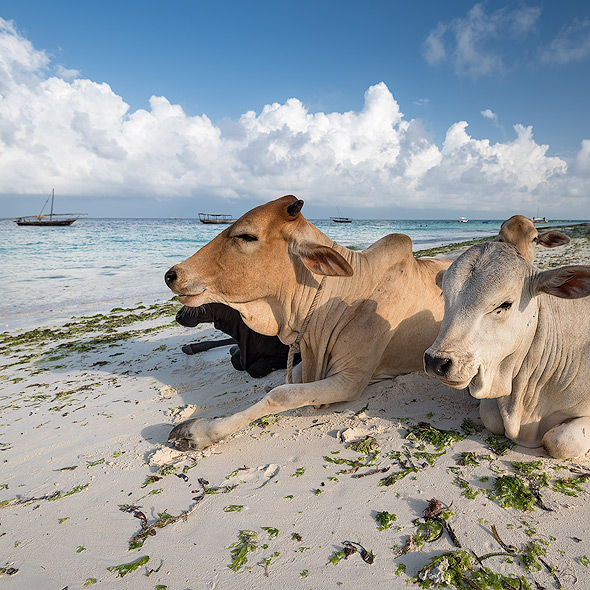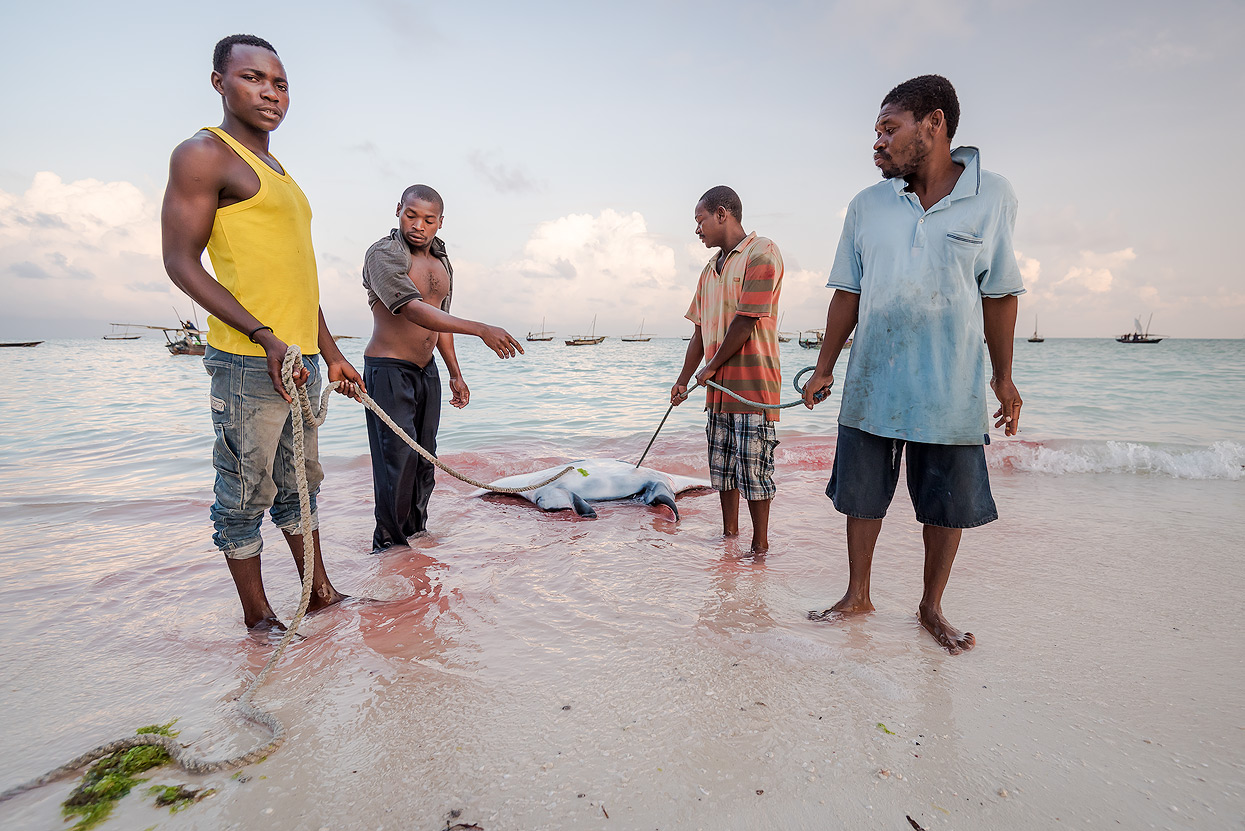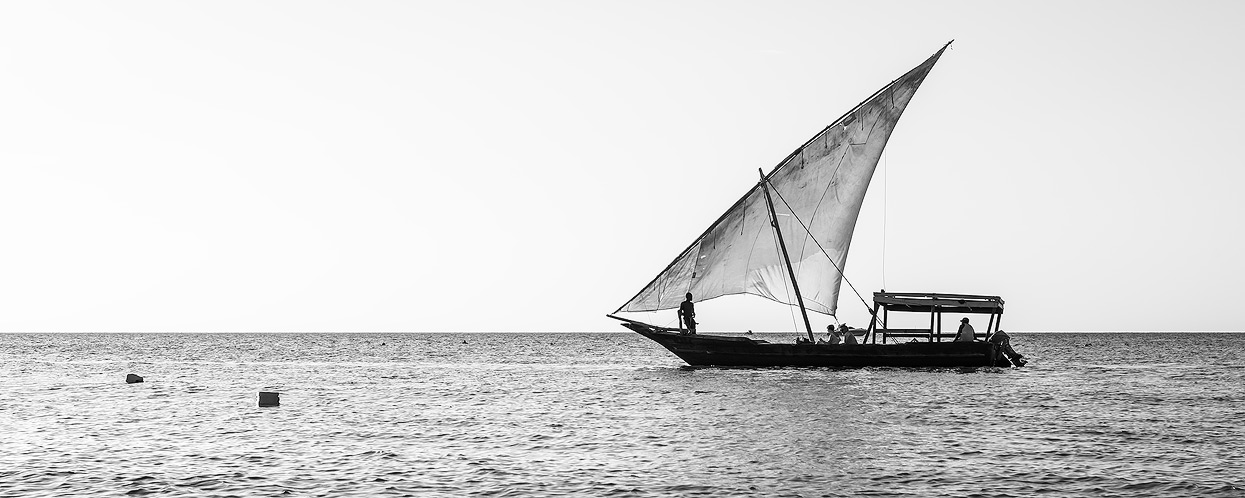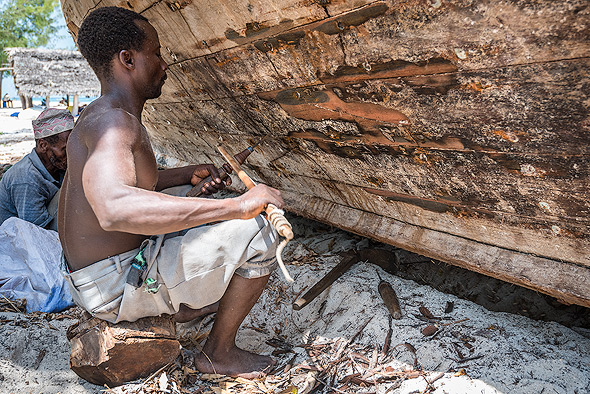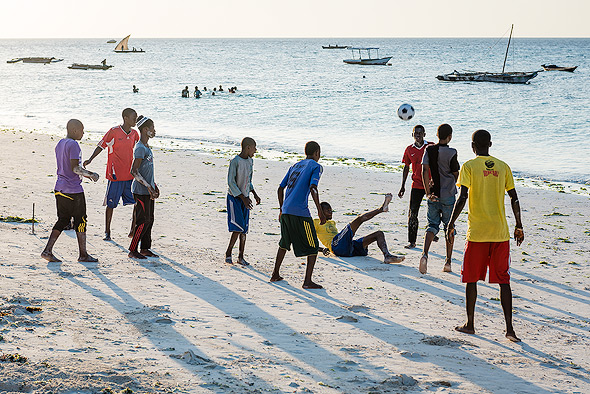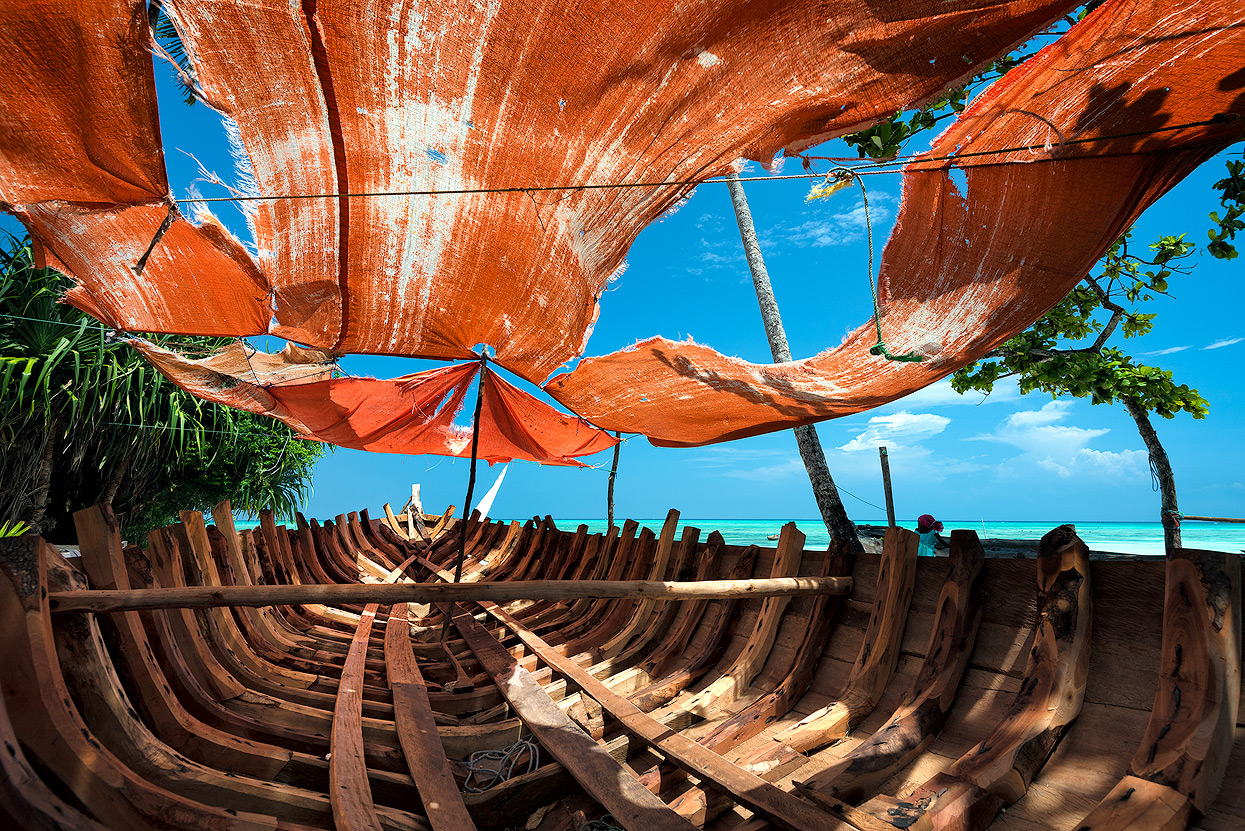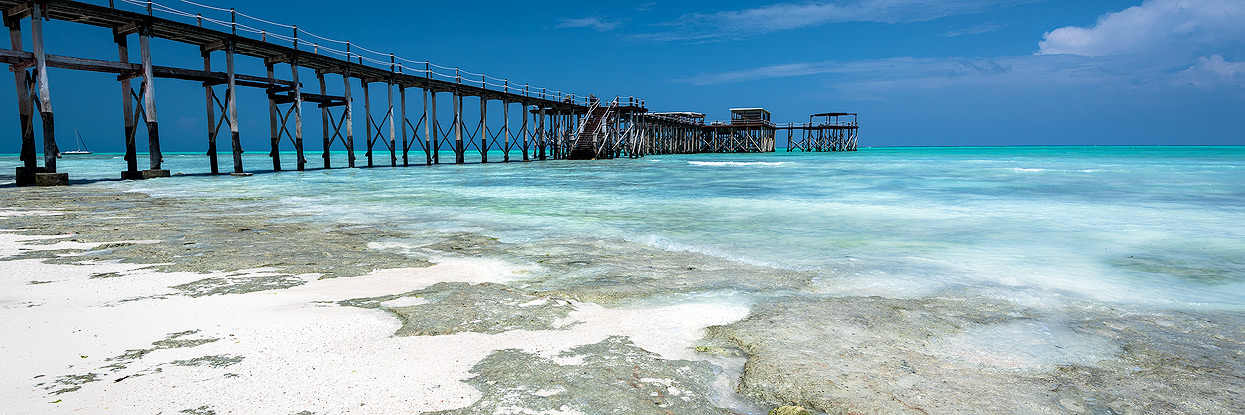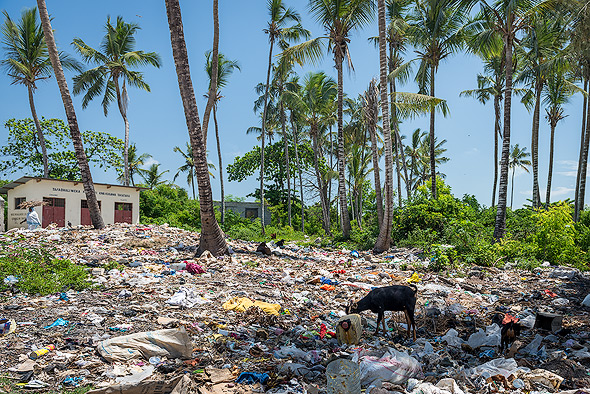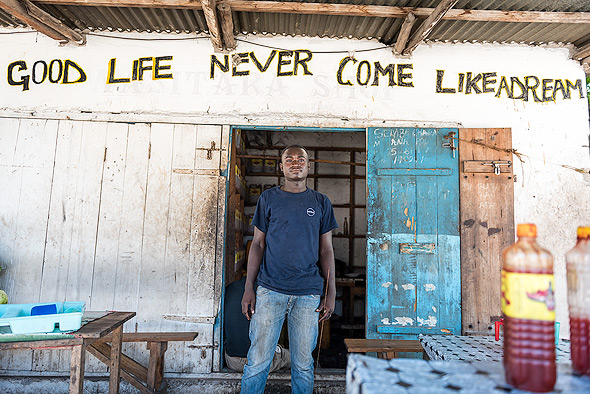The fishermen of Zanzibar
Zanzibar not only offers fantastic beaches, but also fascinating encounters with people and their traditions. For several centuries, Zanzibar has been the center of dhow construction.
The fishermen & Dhow builders of Zanzibar
On our way from Nairobi to Cape Town, we spent about 5 days in Zanzibar. This beautiful island can be quickly and easily reached by plane or boat from the Tanzanian capital Dar Es Salaam. Most visitors combine a relaxing stay in Zanzibar with a safari holiday or climbing Kilimanjaro. A few days on the Spice Island are the perfect balance to an adventure on the mainland. You can have quite a good time here.
Zanzibar is not only suitable for recovering from the rigors of the safari or climbing Kilimanjaro: it's also worth getting up early in the morning to watch the fishermen come back with their catch. As soon as they lay it out on the sand, the beach becomes a lively fish market.
A particularly good spot to watch the action is Nungwi in the very north of Zanzibar. My bungalow was close by so I could photograph the fishermen and boat builders every morning and every evening.
No photos without first getting their trust!
The people in Zanzibar are very friendly and sociable, but do not like to be photographed. Similar to Morocco, you need to ask people for their permission before pressing the shutter button. As a photographer, that might be frustrating, but it's better just to accept it and follow this simple rule. When I first showed up with the camera at the fish market, I was surprised by their negative attitude. I watched them and stayed in the area for about three hours without taking a single picture. Every time I asked about taking a shot, they said either "No photo" or "Money."
On the second day, I was back, early in the morning. Some seemed quite surprised to see me again, there with my camera, but also with a curious and interested look. I asked permission before every photo and if they said no, I kept on moving or tried a little small talk. It's easy to tell if people want to shoot the breeze. Some wanted to know where I came from, if I was a professional photographer, and what I was going to do with the photos.
By the third morning, I had already earned a nickname: "Mr. Photo". Apparently, they realized I was serious about taking pictures. Some of the fishermen agreed to let me take a few pictures. Of course they wanted to see the result right away and gave their honest feedback to me.
Even the small talk went much better than the day before. So slowly I seem to have gained their trust and I really came to enjoy this place and its people.
I was particularly impressed by the fishermen who proudly presented their freshly caught rays. These fish are so big that they had to be dragged ashore by 5 people. But before that, they had to cut out the guts, which was quite a bloody spectacle. On the white sand alongside dozens of tuna, the ray would be laid out ready for auction to the highest bidder. In this case, it was sold to the fish buyer of a luxury hotel in the region. Its guests could look forward to a fine, fresh piece of fish.
On the fourth day, Mr. Photo was back. I was warmly welcomed, especially by the younger men. We chatted and the boat builders doing some repair work were even a bit proud that I had photographed them. While other tourists were still being waved off from taking photos, I could fully concentrate on getting the best shots.
After the daily fish auction, some fishermen asked me if I would come back tomorrow, because they expected to land another big catch that night. Unfortunately there was no fifth day for me at Nungwi Beach, because we wanted to go on to Stonetown, the capital of Zanzibar.
Dhow Building in Zanzibar
A dhow is a traditional Arab sailing vessel with one or more lateen sails. It was primarily used to carry heavy items, like fruit, along the coasts of the Arabian Peninsula, Pakistan, India and East Africa. The term "dhow“ does not stand for just one type of ship but for a whole family of different vessels ranging from small boats with just one mast to cargo ships that can carry over 200 tons. Larger dhows have crews of approximately thirty people, while smaller dhows typically have crews of around twelve.
Besides their traditional design it is very characteristic that Dhows are even today built entirely by hand. No construction plans or modern tools are being used, instead it is done like centuries ago. For smaller dhows, still today not even nails are being used: the planks and boards are held together with tendons or flexible wood, such as roots and willow branches. Such a construction method used to be globally common until the 15th century; this ship-building technique is called «sewn boats». The outer skin is shaped very carefully; afterwards the different sections are stitched together. Only then, an inner frame is being added for stability.
Links & more information
- Dhow Building in Zanzibar (world-unite.de)
- Zanzibar’s Fishermen (edgeofhumanity.com)
- Nine days in Nungwi Zanzibar Tanzania Travel Guide (siyabona.com)
- Boat builders of Zanzibar (Wilton Photography)
- Trauminsel zwischen Afrika und Arabien (NZZ) [German only]
- Sansibar war ein Paradies – dann wurde es zur Drehscheibe des globalen Drogenhandels. Wie ist das passiert? (NZZ) [German only]
